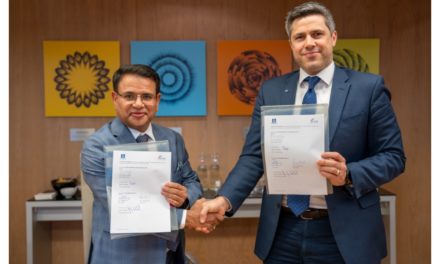- Statkraft has signed a letter of intent with Aker Horizons and Yara to explore opportunities in green hydrogen and green ammonia production and supply
- They plan to electrify and decarbonize Yara’s ammonia production fab in Porsgrunn and to use green ammonia thus produced as emission-free fuel for various other industries including shipping and fertilizer
- It can help set up new value chains for green hydrogen and green ammonia, according to the trio
An energy company, a renewable energy investor and an ammonia producer plan to bring their strengths together to set up what they term as the ‘1st Large-Scale Green Ammonia Project’ in Europe. The trio, Statkraft, Aker Horizons and Yara, have signed a letter of intent to set up this project as the initial venture of their partnership in Norway.
Under the deal, they plan to electrify and decarbonize Yara’s ammonia production plant at Herøya in Porsgrunn, Norway to produce emission-free fuel for shipping, carbon-free fertilizer and ammonia for industrial applications, announced the 3 companies. They argue that this is a strategic investment with potential to establish new value chains for green hydrogen and green ammonia.
They believe this will be a ‘lighthouse’ project as it has the potential to become one of the largest climate initiatives in Norway’s industrial history within the next 5 years to 7 years ‘provided that power is available at the site and the required public co-funding is in place’.
“It is currently more expensive to produce green hydrogen based on renewable electricity and electrolysis than through natural gas, but large-scale production will reduce cost of the electrolysis route,” explained President and CEO of Yara, Svein Tore Holsether. “For hydrogen to be exported or used in long-haul shipping or fertilizer production, it needs to be converted to ammonia, and converting Yara’s existing ammonia plant is both faster and more cost-effective than building a new plant. However, realizing this innovative project will require good incentive frameworks and support from the authorities.”
Additionally, the partners will also explore potential for green ammonia production in Northern Norway as a ‘future opportunity’ as they look to contribute to development of green hydrogen economy in the country since the Norwegian Hydrogen Strategy released in June 2020 sees ammonia as a strong candidate to be a hydrogen carrier, as well as to be directly used as a fuel.
Seeing its potential in helping lower overall emissions, the government is funding the development of such new technologies through Enova, Innovation Norway and the Research Council of Norway.
The 3 partners haven’t specified the renewable energy source they plan to deploy for this project, but it should use solar and/or wind energy considering Statkraft’s heavy investment into these technologies, apart from hydropower.
“Statkraft is Europe’s largest producer of renewable energy. Norway’s rich renewable energy resources are one of our most important competitive advantages,” said Statkraft CEO Christian Rynning-Tønnesen. “This project paves the way for new industrial development and can at the same time give Norway’s important maritime sector a new competitive advantage, namely access to an efficient and emission-free energy source on a large scale.”
Yara is part of the 7-member strong Green Hydrogen Catapult initiative launched in December 2020 through which the companies aim to deploy 25 GW of renewable hydrogen with the help of electrolyzers, by 2026 to halve the current cost of green hydrogen to below $2.00 per kg. Solar and wind will contribute to the production of this green hydrogen (see 25 GW Renewable Hydrogen Production Plans Unveiled).
This week another green hydrogen initiative was launched by 30 European companies that aims to deploy 95 GW of solar and 67 GW electrolysis capacity by 2030 to deliver 100% green hydrogen across Europe for €1.5 per kg (see 95 GW Solar & 67 GW Electrolysis By 2030).















